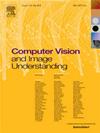用于轻量级图像超分辨率的增强型本地多窗口注意力网络
IF 4.3
3区 计算机科学
Q2 COMPUTER SCIENCE, ARTIFICIAL INTELLIGENCE
引用次数: 0
摘要
由于全局自注意机制能很好地捕捉长距离依赖关系,基于变换器的方法在许多视觉任务中都取得了显著的性能,包括单图像超分辨率(SISR)。然而,图像中存在很强的局部自相似性,如果仍然使用全局自注意机制进行图像处理,可能会导致在图像中相关性较弱的部分过度使用计算资源。特别是在高分辨率的大尺寸图像中,全局自注意会导致大量冗余计算。为了解决这个问题,我们提出了增强型局部多窗口注意力网络(ELMA),它包含两个主要设计。首先,与传统的基于方形窗口分割的自注意不同,我们提出了一种多窗口自注意(M-WSA),它使用一种新的窗口分割机制来获得不同类型的本地长距离依赖关系。与其他 SR 网络常用的原始自注意机制相比,M-WSA 降低了计算复杂度,并通过分析和实验实现了更优越的性能。其次,我们提出了空间门控网络(SGN)作为前馈网络,它能有效克服传统 MLP 中的中间信道冗余问题,从而提高网络的参数利用率和计算效率。同时,SGN 在前馈网络中引入了传统 MLP 无法获取的空间信息。它能更好地理解和利用图像中的空间结构信息,提高网络性能和泛化能力。广泛的实验表明,与最先进的方法相比,ELMA 在保持较少参数和计算成本的同时,实现了具有竞争力的性能。本文章由计算机程序翻译,如有差异,请以英文原文为准。
Enhanced local multi-windows attention network for lightweight image super-resolution
Since the global self-attention mechanism can capture long-distance dependencies well, Transformer-based methods have achieved remarkable performance in many vision tasks, including single-image super-resolution (SISR). However, there are strong local self-similarities in images, if the global self-attention mechanism is still used for image processing, it may lead to excessive use of computing resources on parts of the image with weak correlation. Especially in the high-resolution large-size image, the global self-attention will lead to a large number of redundant calculations. To solve this problem, we propose the Enhanced Local Multi-windows Attention Network (ELMA), which contains two main designs. First, different from the traditional self-attention based on square window partition, we propose a Multi-windows Self-Attention (M-WSA) which uses a new window partitioning mechanism to obtain different types of local long-distance dependencies. Compared with original self-attention mechanisms commonly used in other SR networks, M-WSA reduces computational complexity and achieves superior performance through analysis and experiments. Secondly, we propose a Spatial Gated Network (SGN) as a feed-forward network, which can effectively overcome the problem of intermediate channel redundancy in traditional MLP, thereby improving the parameter utilization and computational efficiency of the network. Meanwhile, SGN introduces spatial information into the feed-forward network that traditional MLP cannot obtain. It can better understand and use the spatial structure information in the image, and enhances the network performance and generalization ability. Extensive experiments show that ELMA achieves competitive performance compared to state-of-the-art methods while maintaining fewer parameters and computational costs.
求助全文
通过发布文献求助,成功后即可免费获取论文全文。
去求助
来源期刊

Computer Vision and Image Understanding
工程技术-工程:电子与电气
CiteScore
7.80
自引率
4.40%
发文量
112
审稿时长
79 days
期刊介绍:
The central focus of this journal is the computer analysis of pictorial information. Computer Vision and Image Understanding publishes papers covering all aspects of image analysis from the low-level, iconic processes of early vision to the high-level, symbolic processes of recognition and interpretation. A wide range of topics in the image understanding area is covered, including papers offering insights that differ from predominant views.
Research Areas Include:
• Theory
• Early vision
• Data structures and representations
• Shape
• Range
• Motion
• Matching and recognition
• Architecture and languages
• Vision systems
 求助内容:
求助内容: 应助结果提醒方式:
应助结果提醒方式:


